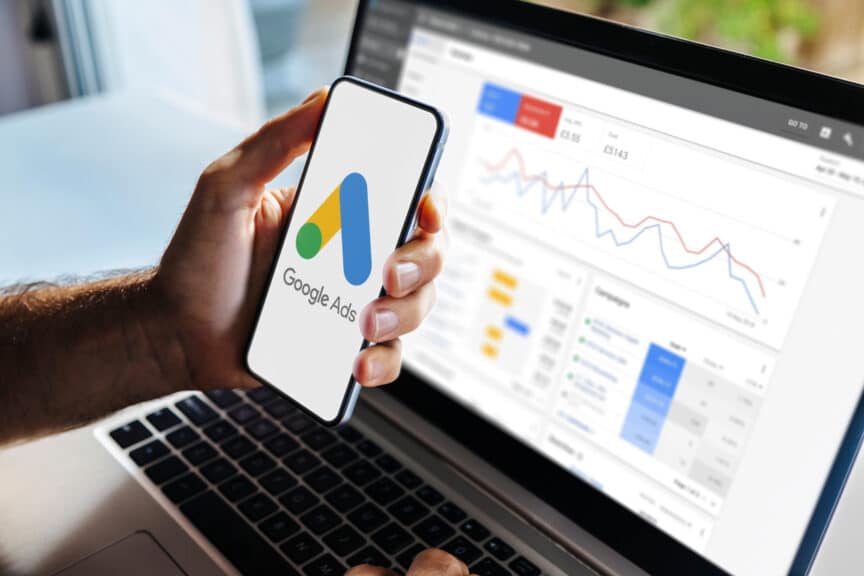Google Ads offers an effective way for you to attract nearby diners to your restaurant. By targeting local customers, you can increase your visibility and drive foot traffic to your establishment. In this post, you’ll discover how to set up local Google Ads campaigns, optimize your budget, and create compelling ads that resonate with your community. Whether you’re a seasoned restaurateur or just starting out, understanding this powerful tool can help you enhance your marketing strategy and bring in more patrons from your area.
Key Takeaways:
- Targeted Audience: Utilizing local Google Ads allows restaurants to reach diners who are specifically searching for nearby dining options, increasing the likelihood of attracting foot traffic.
- Ad Customization: Restaurants can tailor their ads based on location, cuisine type, and customer preferences, making promotions more relevant to potential customers in the area.
- Measurable Results: Google Ads provide detailed analytics that help restaurants assess the effectiveness of their campaigns, enabling adjustments for better performance over time.

Understanding Google Ads for Restaurants
A Google Ads campaign can significantly enhance your restaurant’s visibility.
What are Google Ads?
Above all, Google Ads is an online advertising platform that allows businesses to promote themselves on Google’s search engine and its affiliated websites. It operates on a pay-per-click (PPC) model, enabling you to bid on keywords relevant to your restaurant, thereby attracting diners actively searching for dining options.
The Importance of Local Targeting
Across the restaurant industry, local targeting is paramount for connecting with your community. Focusing your ads on nearby diners drives foot traffic to your establishment, ensuring your marketing efforts reach potential customers who are ready to eat.
It’s crucial to hone in on local keywords and demographics, as this allows you to reach people searching for dining options specific to your area. By utilizing location-based targeting features, you can effectively appeal to consumers who are likely to convert into patrons, thus maximizing your marketing ROI.
How Google Ads Work
The Google Ads platform functions by allowing you to create targeted ads that appear when users search for certain keywords. You set a budget, choose relevant keywords, and create ad copy that highlights your restaurant’s unique offerings. When potential customers search for those keywords, your ads may appear above or alongside organic results, driving traffic to your website or phone line.
Further, Google Ads also provides analytics that enables you to monitor ad performance, helping you fine-tune your strategies over time. You can test different ad variations, optimize your bids, and adjust your targeting parameters to ensure that your marketing resources are spent effectively, ultimately leading to improved visibility and patronage for your restaurant.
Setting Up Your Google Ads Account
Some restaurant owners may feel overwhelmed when creating their first Google Ads account. However, it’s a straightforward process that can lead to increased visibility and foot traffic for your establishment. For more insights, check out the 9 Tips to Successfully Use Google Ads for Restaurants.
Creating a Google Ads Account
Below, you will find that setting up a Google Ads account is simple. Start by visiting the Google Ads website and clicking on “Start Now.” You’ll need to fill in some basic information, such as your email address and website, and then provide details about your advertising goals and budget. This process takes just a few minutes and allows you to tailor your ads to attract local diners.
Navigating the Google Ads Interface
One key aspect of using Google Ads effectively is becoming familiar with the interface. Once your account is created, you will land on the dashboard, which displays your campaigns, ad groups, and performance stats. Utilize this dashboard to monitor your ads and make adjustments as needed to ensure your restaurant attracts nearby diners efficiently.
For instance, you can easily navigate to the “Campaigns” tab to see how your ads are performing in real-time. With this information at your fingertips, you can analyze which ads resonate with your audience and which need optimization. Explore the various tools and reports available in each section to maximize your advertising efforts.
Linking Your Google My Business
Before exploring into your ad campaigns, it’s advisable to link your Google My Business account to your Google Ads account. This connection allows your restaurant’s location, hours, and other vital information to be showcased in your ads, making it easier for potential customers to find you.
Account linking enhances your ad’s visibility and ensures that any information displayed is up-to-date. With your Google My Business account connected, your ads can feature crucial details that may persuade nearby diners to choose your restaurant over others in the area. This integration is necessary for leveraging local search effectively.
Crafting Effective Ad Campaigns
After establishing your online presence, the next step in restaurant marketing is to craft effective ad campaigns that will attract nearby diners. Implementing well-structured Google Ads can significantly increase your restaurant’s visibility to potential customers searching for dining options in your area.
Defining Your Target Audience
Above all, it’s crucial to define your target audience. Knowing who you want to attract—whether it’s families, couples, or young professionals—will help you tailor your marketing message and improve your ad performance.
Selecting the Right Keywords
By focusing on the right keywords, you’ll ensure that your ads appear when potential customers search for relevant terms. Incorporate local and specific keywords related to your cuisine, location, and dining experience to capture your audience effectively.
Plus, consider using long-tail keywords that include your restaurant type and area, such as “Italian restaurant downtown” or “family-friendly diner near me.” These keywords tend to have less competition and can lead to higher conversion rates as they target users with specific intentions.
Writing Compelling Ad Copy
Above all, your ad copy needs to stand out to entice diners to click on your ads. Use engaging language that highlights your unique offerings, such as daily specials, ambiance, or exclusive promotions. Keep it concise and relevant to your audience.
Further, make sure your headlines are captivating and your message is clear. Use adjectives and phrases that evoke emotion or a sense of urgency, such as “Limited Time Offer” or “Discover Authentic Flavors.” This will help draw more attention to your ad and encourage more clicks.
Utilizing Call-to-Action Strategies
For the best results, incorporate strong call-to-action strategies in your ads. Phrases like “Reserve Your Table Now” or “Order Today for Takeout” motivate potential customers to take immediate action.
Hence, ensuring your call-to-action is direct and enticing will assist in increasing conversions. A well-phrased call-to-action can guide customers towards making a reservation, placing an order, or learning more about your restaurant.
Optimizing Your Local Ad Reach
Despite the competitive nature of the food industry, effectively optimizing your local ad reach with Google Ads can significantly enhance your ability to attract nearby diners. By employing targeted strategies, you can maximize your restaurant’s visibility and drive more foot traffic. For more insights on this topic, check out Google ads for restaurants : r/PPC.
Location Targeting Basics
Before you probe your advertising campaign, it’s important to understand the fundamentals of location targeting. This feature allows you to specify where you want your ads to be shown, ensuring that your promotions reach the right audience. By defining your target area, you can focus your ad spend more effectively, driving local traffic to your restaurant.
Leveraging Geo-Targeting Features
Location settings in Google Ads offer a range of geo-targeting options that can help you connect directly with potential customers nearby. You can choose to target your ads based on specific ZIP codes, cities, or even a radius around your restaurant, ensuring that your promotional efforts are aimed at an appropriate audience.
Even more exciting, Google Ads allows you to refine your geo-targeting through features like location-based bid adjustments. This means you can increase your bids when targeting areas with high foot traffic or potential customer engagement, ultimately leading to better visibility and more conversions for your restaurant.
Understanding Local Services Ads
One effective way to reach local diners is by utilizing Local Services Ads. These ads are designed to connect businesses with people in their area actively seeking services, making them a perfect fit for restaurants aiming to attract nearby patrons.
For instance, when you set up Local Services Ads for your restaurant, you’ll appear at the top of Google search results within your designated area. These ads often include customer reviews and ratings, which can help build trust with potential diners. Leveraging this ad format can lead to increased visibility and, ultimately, more customers dining at your establishment.
Budgeting and Bidding Strategies
Unlike many aspects of running a restaurant, managing your Google Ads budget requires strategic planning to maximize your advertising impact. A well-defined budget allows you to allocate resources effectively, ensuring that you reach your target audience without overspending.
Setting a Realistic Budget
Any successful marketing plan starts with setting a realistic budget. Consider your restaurant’s overall marketing expenses, projected revenue, and specific goals for your Google Ads campaign. This will help you determine how much you can invest without straining your financial resources.
Different Bidding Options Explained
Budgeting for Google Ads also involves choosing the right bidding strategy. Various bidding options exist, such as manual bidding, automated bidding, or cost-per-click (CPC). Each option has different implications for how you spend your budget and manage your ads’ visibility.
Even with automated options like Target CPA or Target ROAS, it’s necessary to understand how each bidding strategy aligns with your objectives. Manual bidding allows for more control but requires constant monitoring, while automated strategies can optimize spending based on algorithms but may sometimes lack precise targeting.
Monitoring and Adjusting Your Spending
Bidding isn’t a set-and-forget process; continuous monitoring of your spending is important. Regular check-ins allow you to track performance metrics and adjust your bids based on what’s working or not, ensuring you remain competitive without deviating from your budget.
And as you gather data over time, refining your bids accordingly will enable you to allocate your budget to the highest-performing ads and keywords, maximizing your return on investment and drawing in more nearby diners effectively.
Measuring Success and Performance Analytics
All restaurant owners must emphasize the importance of measuring success through performance analytics. Understanding how your local Google Ads campaigns are performing enables you to make informed decisions that can enhance your marketing strategy and boost your sales.
Understanding Key Performance Indicators (KPIs)
Analytics is necessary for assessing your Google Ads success. Key Performance Indicators (KPIs) such as click-through rates, conversion rates, and cost-per-click will help you gauge the effectiveness of your campaigns. These metrics shine a light on your advertising performance, allowing you to hone in on areas for improvement.
Utilizing Google Ads Reporting Tools
Between monitoring your campaigns and evaluating their performance, Google Ads provides robust reporting tools that give you insights into your ads’ effectiveness. These tools allow you to track visitor behavior and interactions with your ads, so you can understand which strategies are resonating with your target audience.
Plus, by regularly reviewing reports generated from these tools, you can see trends over time that can inform your decisions. You’ll gain insights into user demographics, times when your ads perform best, and how specific keywords are delivering traffic. This information is invaluable for honing your advertising efforts and ensuring your budget is being spent effectively.

Making Data-Driven Amendments to Campaigns
One of the key advantages of using performance analytics is that it allows you to make data-driven amendments to your campaigns. By continuously analyzing your campaign performance, you can determine which ads are underperforming and need adjustment.
Performance analytics gives you the opportunity to experiment with different ad creatives, targeting options, and bid strategies. By making informed changes based on data, you can improve your ad performance and reach more nearby diners effectively. In this way, your Google Ads campaigns can continually evolve to meet your restaurant’s needs and attract a steady stream of local customers.
To wrap up
Considering all points, implementing local Google Ads is an effective strategy to attract nearby diners to your restaurant. By targeting specific locations and utilizing engaging ad copy, you can significantly increase foot traffic and boost sales. Moreover, staying updated on best practices and leveraging analytics will help refine your campaigns over time. For further insights, check out A Comprehensive Guide to Google Ads for Restaurants to enhance your advertising efforts and maximize your reach.
FAQ
Q: What are Google Ads and how can they benefit my restaurant?
A: Google Ads is an online advertising platform that allows businesses to display ads on Google search results and its advertising network. For restaurants, utilizing Google Ads can increase visibility among local diners searching for dining options nearby. By targeting specific keywords related to your cuisine or offerings, you can attract more foot traffic and potential customers looking for immediate dining options.
Q: How do I set up a Google Ads campaign for my restaurant?
A: To set up a Google Ads campaign, start by creating a Google Ads account. Once registered, you can choose the type of campaign you want—Search Ads are often effective for restaurants because they appear when users search for relevant keywords. Next, you’ll select your target audience by geographic location and set a budget. Finally, create compelling ad copy that highlights special dishes, promotions, or unique aspects of your restaurant.
Q: How can I ensure my Google Ads reach local diners effectively?
A: To reach local diners effectively, use location targeting options available in Google Ads. Set up your campaign to target specific geographic regions around your restaurant, such as your city or neighborhood. Additionally, use keywords that include location terms, like “best pizza in [Your City],” to connect with food seekers in your area. Regularly monitor and adjust your campaign for the best-performing keywords and settings.
Q: What kind of budget should I allocate for Google Ads marketing?
A: The budget for Google Ads marketing can vary depending on your goals and the competition level for keywords in your area. Many restaurants start with a modest budget (e.g., $10-$20 per day) and adjust as they analyze performance. It’s important to track your return on investment (ROI) and make data-driven decisions on increasing or reallocating your budget based on successful ad campaigns.
Q: How can I measure the success of my Google Ads for my restaurant?
A: Measuring the success of your Google Ads can be done through various metrics available in your Google Ads account. Key performance indicators (KPIs) to track include click-through rate (CTR), conversion rate (how many clicks lead to reservations or orders), and return on ad spend (ROAS). You can also use Google Analytics for deeper insights, including user behavior once they visit your site. Regularly reviewing these metrics will help refine your strategies and achieve better results.








